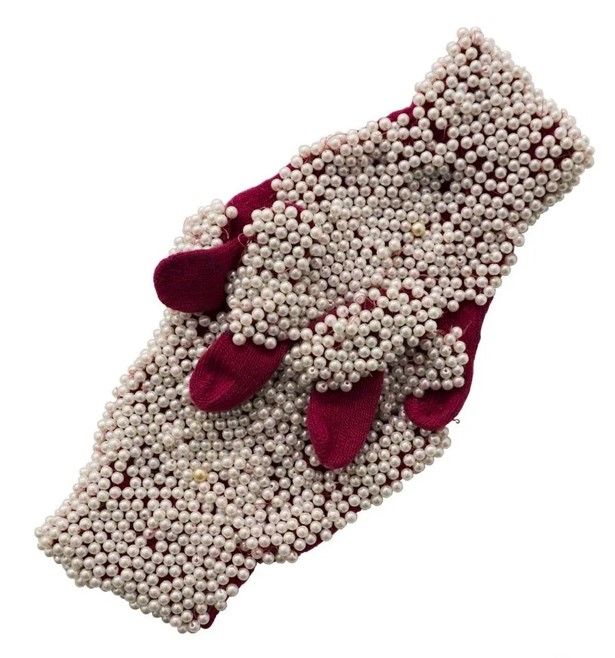Vicky Smith
'It Lay Beside Me All Night – Unbuttoned (JJ to NB July 12th, 1904)'
A closer look by Genevieve Rust, volunteer at Olivier Cornet Gallery
"Vicky Smith’s piece “It Lay Beside Me All Night – Unbuttoned (JJ to NB July 12th, 1904)” was featured in the 16th June - 30th July 2020 group show entitled ‘The Morphing Feminine.’ This group exhibition, featuring artists Aisling Conroy, Mary A. Fitzgerald, David Fox, Nickie Hayden, Miriam McConnon, Kelly Ratchford, Vicky Smith, and Susanne Wawra, was a part of the annual Bloomsday Festival. The Bloomsday Festival, which celebrates the life and work of James Joyce, takes place on the 16th of June – the day 1922’s Ulysses takes place. ‘The Morphing Feminine’ exhibition was inspired by a 2019 talk given by Dr. Caroline Elbay called ‘Throwing Shapes: The Morphing Feminine in Joyce,’ given at the James Joyce Centre. The speech examined Joyce’s expressions of characterial femininity, “through metamorphosis – a shifting of form or maturing to adulthood – and anthropomorphism, many of James Joyce’s female (and feminine) characters represent both [wo]man and nation intent on liberation” (Elbay, 2019).
Vicky Smith’s piece was directly inspired by a letter between James Joyce and his wife Nora Barnacle written on the 12th of July, 1904. In this letter Joyce conveys his experience of sleeping beside one of Nora’s gloves in her absence. He states: “I hope you put my letter to bed properly. Your glove lay beside me all night – unbuttoned – but otherwise conducted itself very properly – like Nora” (Joyce, 1904). Smith constructed her piece from a pair of found gloves; a frequent sight in Dublin City, wherein lost winter-wear is commonly placed on fence posts and electrical boxes. Through the context of Joyce’s letter, the gloves are anthropomorphised as an agent of eroticised affection between the lovers. The pink colour of the gloves, as well as the gleaming pearls embroidered upon them with pink thread, represent the institutional structure of traditional femininity. Smith associates the pearls with the archetype of a prim-and-proper 1960s housewife. This role becomes imposed upon the pink gloves – perhaps representing a young, newly-wed, woman – and steadily encompasses her personal identity. In her artist’s statement, Smith describes how “the gloves are being morphed by the pearls… the young pink girl is now succumbing to the domestic sphere, far from the glamorous Hollywood life Grace Kelly lived, in her mind” (Smith, 2020). Smith’s interpretation of the ‘Morphing Feminine’ expands upon the iteration of femininity in Joyce’s works through a deeply personal, humanised lens.
I was drawn to this piece due to the inherent romantic solitude of the ‘found object.’ As someone who crochets and embroiders, I personally know the amount of labour that is necessary in the creation of knitwear – a process altered and simplified through the mechanised factory system. Smith’s affixing of pearls to the found gloves breathes new life into the recovered object. Additionally, the role of women in the production of knitwear through commercial and domestic labour (with knowledge of fibre arts oftentimes passed down through multiple generations of women) supplements the theming of “It Lay Beside Me All Night – Unbuttoned (JJ to NB July 12th, 1904)” through an almost ancestral frame of reference. Vicky Smith’s piece serves as an exploration of the performance of femininity and social roles through both the world of James Joyce and her lived experience as a woman."
Genevieve Rust

